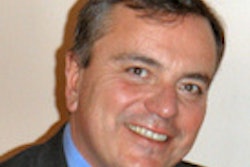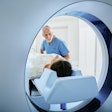Dear AuntMinnieEurope Member,
Image-guided minimally invasive procedures have transformed patient care in many areas over the past two or three decades, but keeping tight control of radiation dose is no easy task.
To tackle this urgent problem, a group from Liverpool, U.K., has developed a 14-point plan to maximize the safety of both patients and medical staff. Find out more in our CT Community, or click here.
At the annual meeting of the European Society of Musculoskeletal Radiology in Bari, Italy, 3D printing made a big impression. Researchers explained how they prospectively collected preoperative CT data from patients listed for complex revision hip arthroplasty, and then digitally reconstructed images using 3D printing software. Go to the Advanced Visualization Community, or click here.
Across Europe, 3D printing of surgical prostheses has become a reality in routine practice, and more hospital managers are realizing the benefits of adding digital design experts to medical teams. The appointment by the U.K. National Health Service of Heather Goodrum, a biomedical 3D technician, underlines this growing trend in healthcare today. For the full story, click here.
Meanwhile, a multinational research team has used lung nodule assessment software to differentiate histological subtypes of lung adenocarcinomas manifesting as ground-glass nodules. In a European Radiology article, the investigators have shown how the emerging technique can help to reduce diagnostic uncertainty in managing these common lesions. Get the details here.
A group from the prestigious Swiss Federal Institute of Technology in Zurich is focusing its efforts on delivering better artificial hearts. The team has used CT images of a real patient to create a computer-aided design model in 3D, and eventually the researchers hope to provide tailor-made, soft artificial hearts made of silicone that fit the anatomy specific to each patient, leading to a lower risk of complications after implantation. Visit the Cardiac Imaging Community, or click here.



















